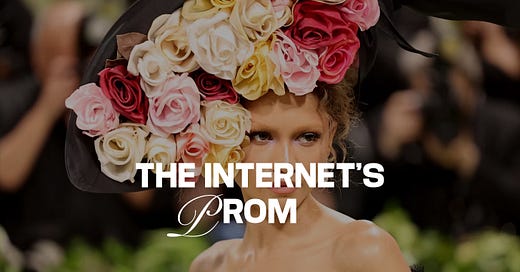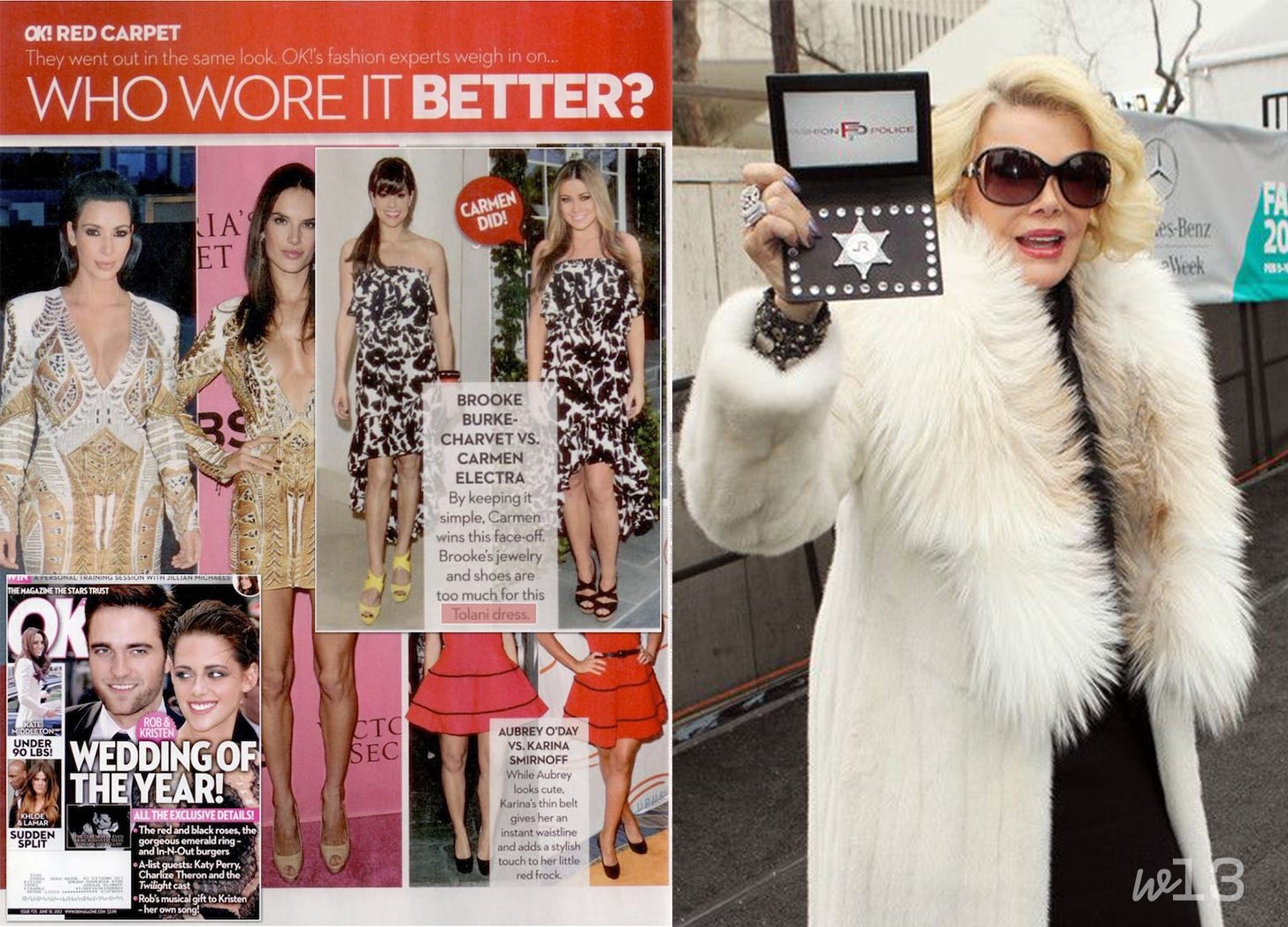003. On red carpet dressing | Why coolness, brand contracts, and context matter
Sorry! Not every A-lister is a natural style icon.
Happy first Tuesday of May (aka the day after the Met Gala) to those who celebrate!
I won’t pretend to have hidden knowledge about last night’s theme or a list of niche references I wanted to see on the Met steps. I don’t have either. What I do have for you is a series of thoughts on the complex relationship between the star, the stylist, the look, and the audience.
The media culture of the late 90s and early 00s played an undeniable role in shaping the foundation of this dynamic. While I am oversimplifying what was excellently written by
last month, the tabloid culture that dominated the era essentially created the first iteration of the stylist as we know it today. Paparazzi photos scrutinized by ruthless fashion press (à la Fashion Police, best [and worst] dressed lists, and head-to-head who wore it betters) exposed the truth: not every A-lister is also a natural style icon.With every outfit now immortalized in print, the pressure to show up on the carpet beautifully and/or in a clever way (that nods to a recent project, makes timely reference to a cultural moment, recreates fashion history, etc.) was on. Stars, therefore, needed “someone to figure out their personal brand, to procure cool clothes for them and make sure they weren't embarrassed.” (via Articles Of Interest)
Keep reading with a 7-day free trial
Subscribe to wardrobe thirteen to keep reading this post and get 7 days of free access to the full post archives.





